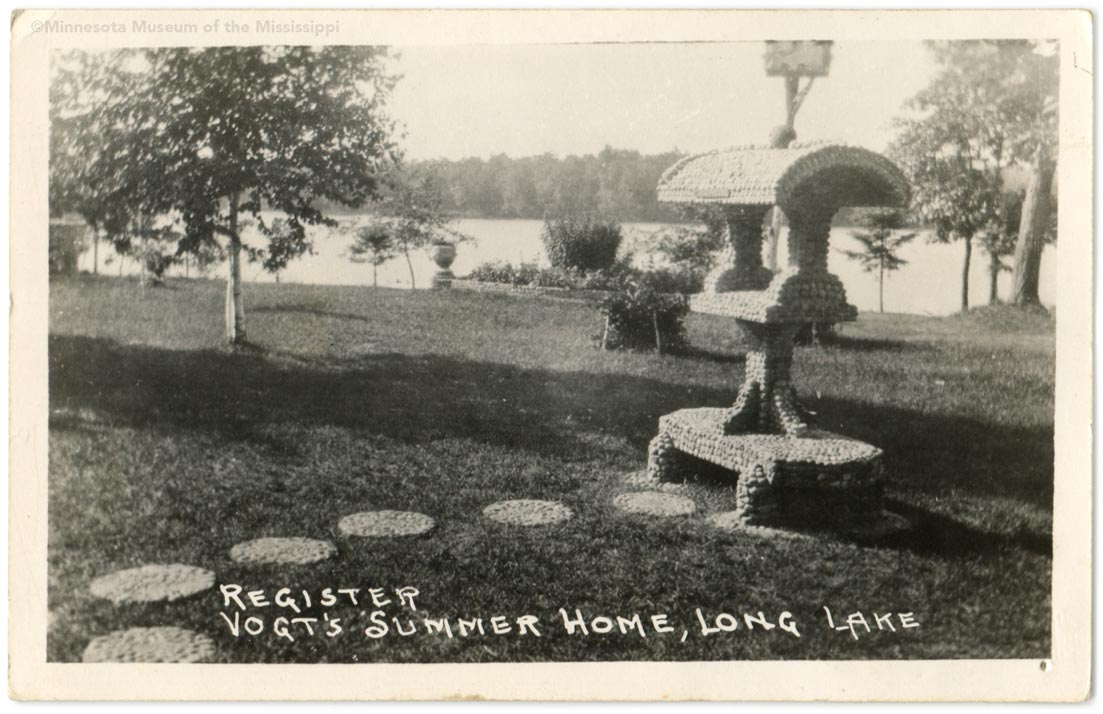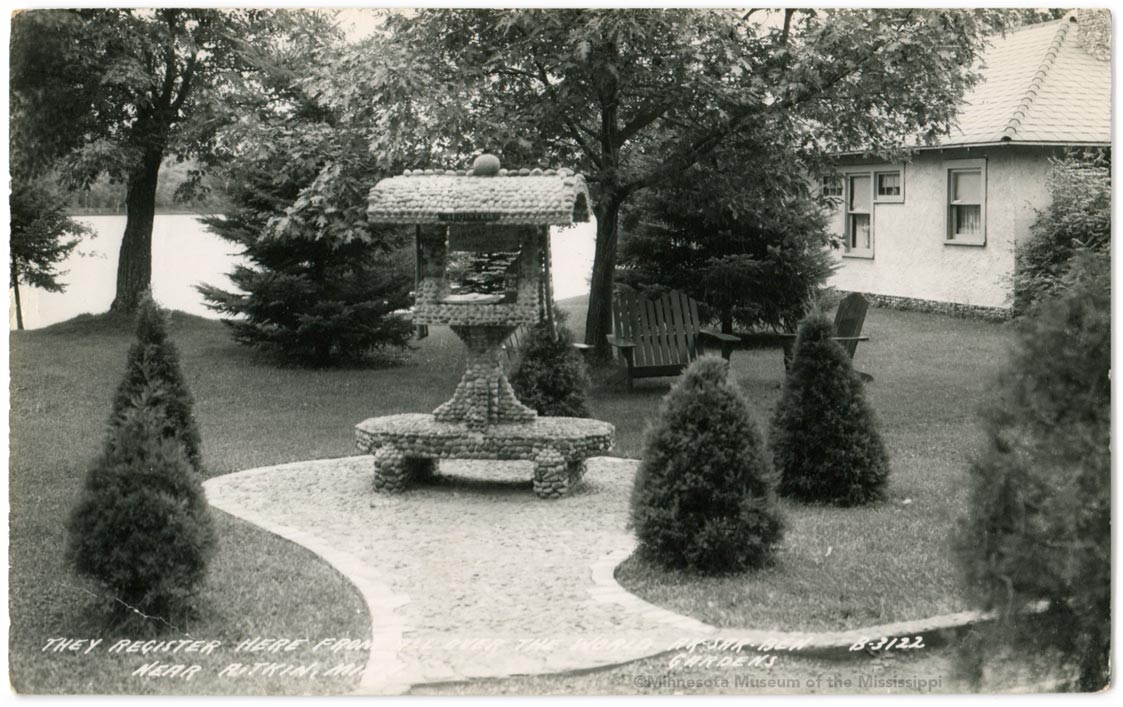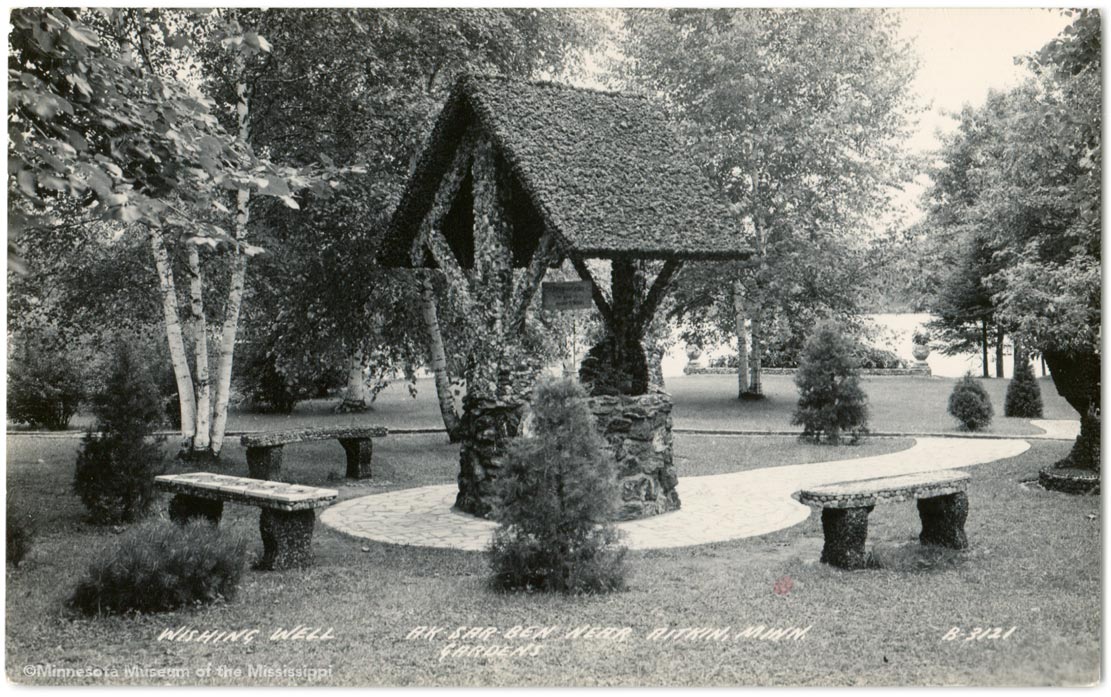
Guest Register
As word of the Vogts' unique tamed fish and beautiful flower gardens spread, the number of visitors to Ak-Sar-Ben increased. Even a few celebrities such as humorist Will Rogers and actress Norma Talmadge came down from Breezy Point Resort about thirty miles away. The brothers were proud of how many visitors toured the grounds of their home. In about 1930 or 1931, Hugo built a decorative kiosk to house a guest book for visitors to sign. It was one of his first structures built of concrete and stone instead of the wood garden furniture he'd built previously.
The round cobble stones embellishing the concrete kiosk came from near Lake Mille Lacs, about 10 miles south of here. The structure resembles a lectern made of wood, with squared-off corners and support brackets. The curved roof is topped with larger cobble stones with a large rock at the center, which was likely chosen for its perfectly round shape. The roof has a small sign on the side labelled "Register". In the later photo below, a wood sign hanging above the guest book welcomes visitors to Ak-Sar-Ben and a box next to the book offers postcards such as this one for 5¢ donation.
The dates of the postcard photos above and below are unknown, but they show how the pathway to the guest register changed over time, as Hugo added stone pavement around the register and improved the pathways to accomodate increasing numbers of summer visitors. A 1932 article about the garden reports that 5,000 visitors had stopped by the previous summer. By 1939 the crowd had grown to nearly 40,000 a summer and the Vogts began charging 10¢ admission to lessen the impact of so many visitors on their property.
The old register still stands in 2017 in its remnant of pavement, though the surrounding shrubberies are long gone and an addtion to the cabin is now encroaching on it. Most of the large cobbles at the crest of the roof have fallen off, but the large center stone remains.
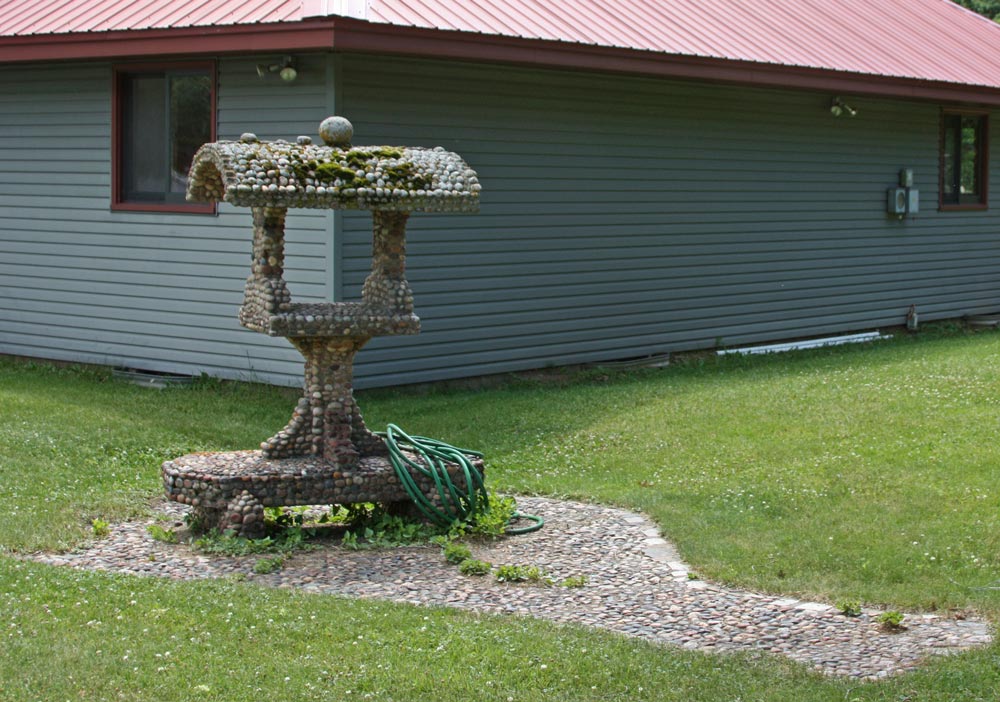
Wishing Well
Across the main path from the Guest Register, a stretch of flagstone pavement leads to a wishing well circled by concrete benches.
The well still stands in 2017, supporting a thick carpet of moss on its roof.
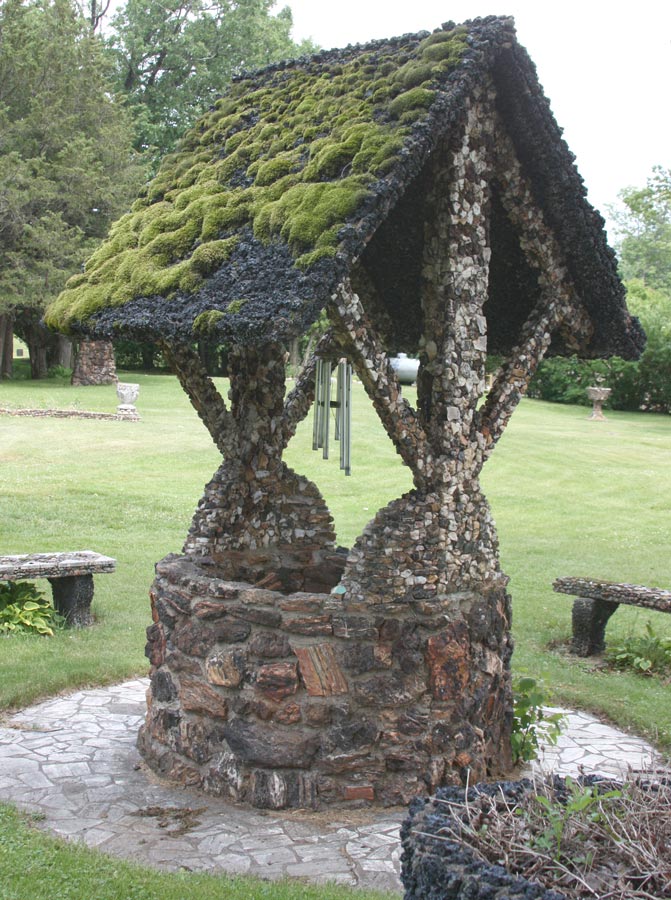
The well was built by Hugo using three different types of rock. The base of the well is made from large blocks of iron ore collected from the Iron Range. The supports are concrete embedded with smaller quartz rocks, and the roof is covered with lumps of sintered ore, which are fused chunks of crushed ore, a byproduct of iron processing.The rough surface of the sintered ore roof has gathered a lot of moss over the decades.
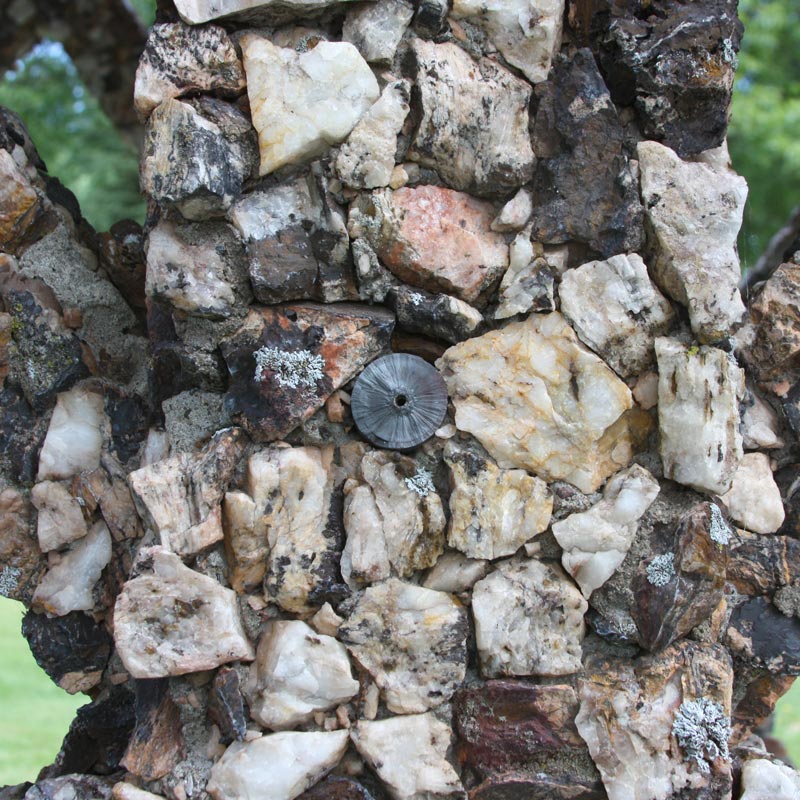
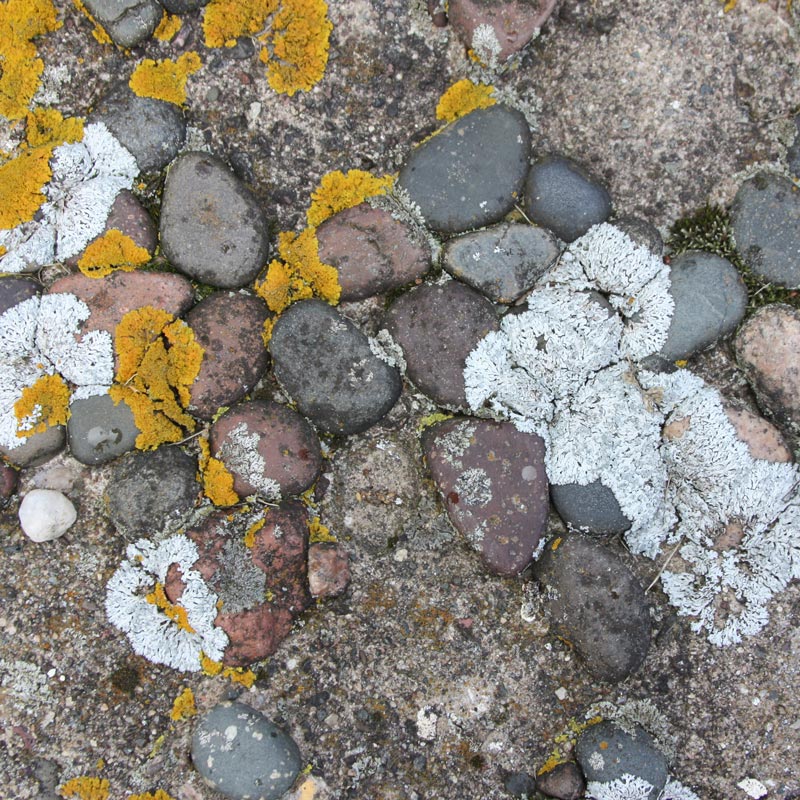
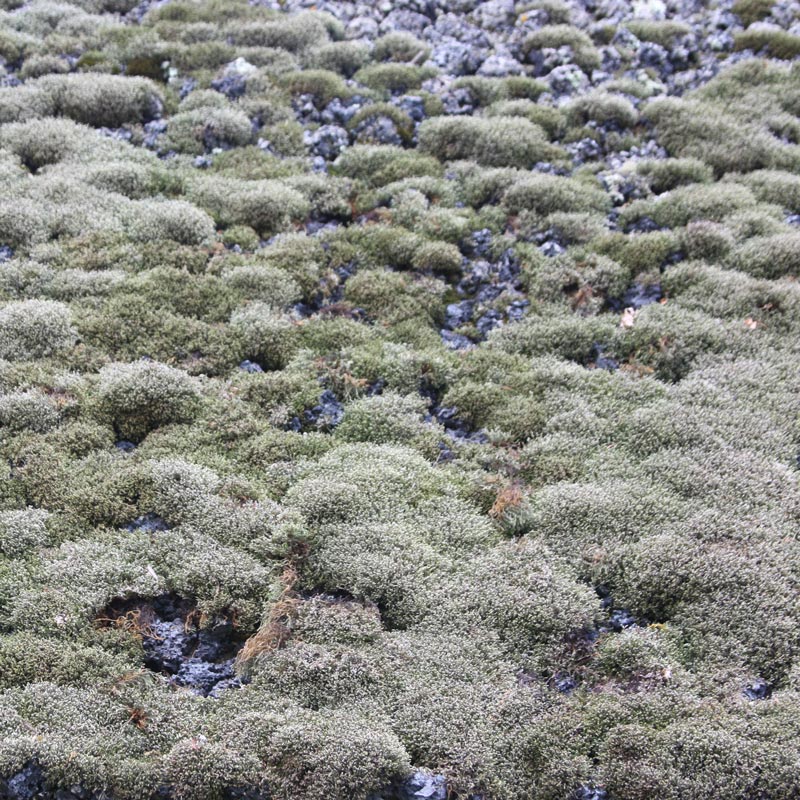
Marjorie Rea's guidebook to Ak-Sar-Ben mentions an unusual feature of the wishing well: a small tunnel or pipe which once ran from below the well to the house. The purpose of the tunnel seems to have been to run wires for an audio speaker which played music from the depths of the well as a subtle echo of music played from speakers hanging in the nearby trees.
